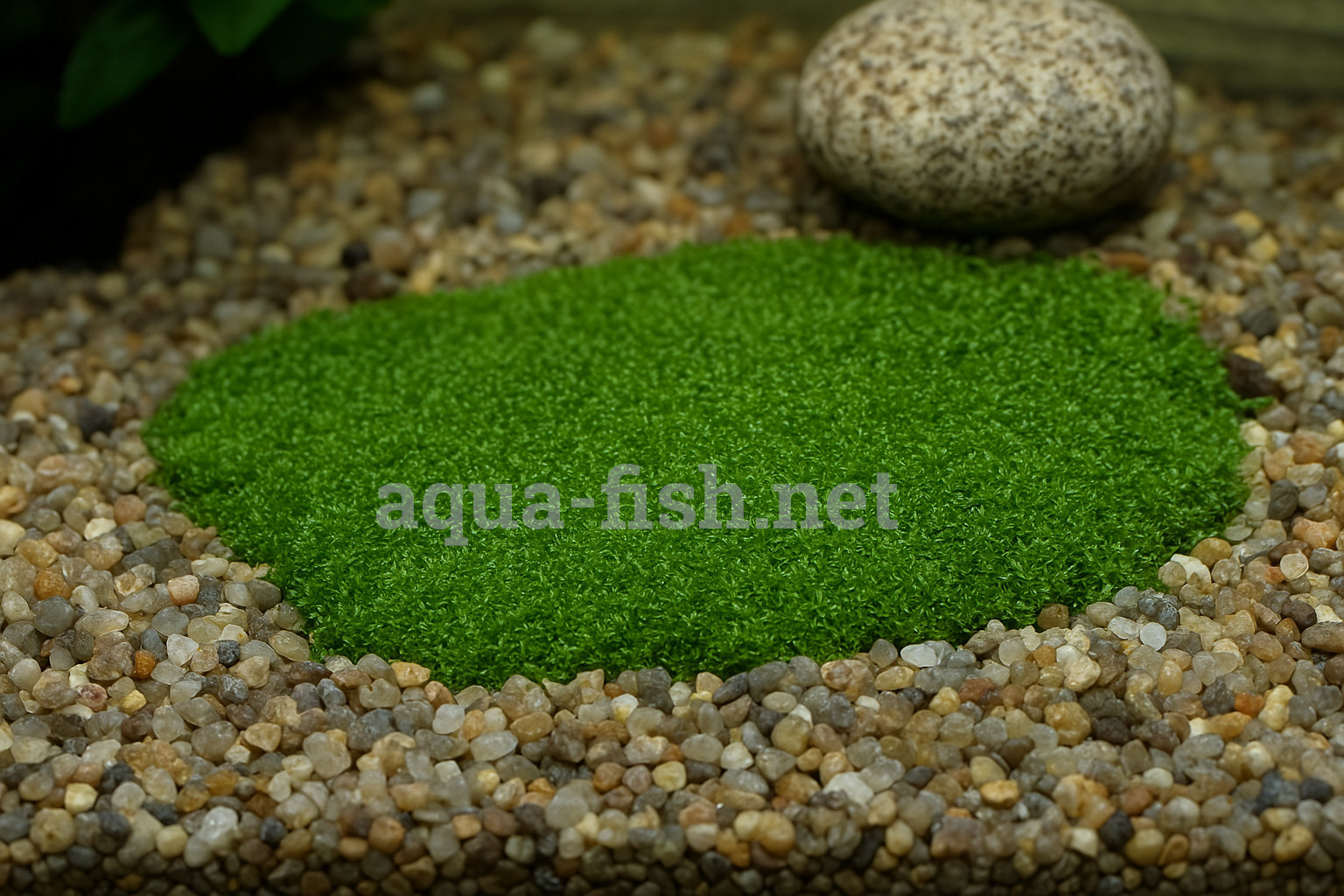Riccia fluitans
Scientific name: Riccia fluitans
Family: Ricciaceae
Maximum size reached under cultivation: 0 - 2 cm (0 - 0.79 inch)
014
Recommended pH range: 6.2 - 7.5
Recommended water hardness: 8 - 12°dGH (142.86 - 214.29ppm)
0°C 32°F30°C 86°F
Recommended temperature range: 20 - 28 °C (68 - 82.4°F)
Preferred propagation method: Cuttings
Native to: Cosmopolitan
Growth rate: Normal
Recommended substrate: Rocky
Lighting requirements: Bright
Ideal placement in tank: Foreground
Family
Ricciaceae
Common Name
Floating Crystalwort
Propagation
Riccia fluitans reproduces vegetatively through fragmentation. Small clumps or even individual strands can develop into new, healthy growth under the right conditions. Simply divide a dense portion and attach it to your desired location using fine mesh or thread. It thrives in bright lighting and stable water parameters, making propagation easy even for beginner aquarists. Note that this plant is extremely light and buoyant, so securing it properly is essential for carpet-style aquascaping.
Difficulty
Medium. While Riccia fluitans is not difficult to grow, maintaining its form—especially as a foreground carpet—requires regular trimming, consistent lighting, and, ideally, CO2 supplementation. Left unattended, it tends to float upward and may detach from the substrate or hardscape.
Short Description
Riccia fluitans is a cosmopolitan liverwort found across all continents in calm, shallow waters such as rice paddies, marshes, and ponds. In aquariums, it can either float freely or be tied to hard surfaces like stones or driftwood to create lush green carpets. When attached, it forms dense, low-growing mats that enhance the visual appeal of planted tanks. The plant is soft and delicate, offering excellent shelter for fry, shrimp, and small fish. Under high lighting and good water quality, it grows rapidly and evenly. CO2 is not essential but strongly recommended for compact and vibrant growth.
Various hobbyist variants exist, including the compact “Dwarf Riccia,” which is not a separate species but a form of Riccia fluitans with slightly denser and slower growth. These variants are favored in aquascaping for their carpeting ability and refined appearance.
Maintenance and Care
Riccia fluitans prefers bright lighting and clear, nutrient-rich water. It tolerates pH levels from 6.2 to 7.5 and water hardness between 8 – 12°N (142.86 – 214.29 ppm). The optimal temperature range is 20 – 28°C (68 – 82.4°F). As a floating plant, it does not require substrate, but when used in foreground aquascaping, it must be tied down securely. Regular trimming encourages dense horizontal growth and prevents it from floating upward. Adding CO2 and micronutrients significantly enhances its appearance and health.
Compatibility
This plant is compatible with peaceful fish and invertebrates. Its floating form is excellent for fry tanks, offering shelter and shade, while its carpeted form enhances aesthetics in aquascapes. However, it is not suitable for tanks with strong surface currents or herbivorous species that may damage its fine structure. Its ability to grow in various forms makes it highly versatile, though maintenance is needed to prevent overgrowth or detachment.
Submersion and Aquascaping
Riccia fluitans is fully aquatic and most often used either as a floating plant or tied down in the foreground. When attached, it creates a flowing green carpet that mimics moss but with a brighter, more translucent appearance. It is especially popular in nature-style aquascapes and shrimp tanks. The plant's flexibility allows for creative use in various tank zones, though it requires control to maintain its form. It is not suitable for emersed growth, as it dries out quickly outside water.
FAQs
-
Can Riccia fluitans be used as a carpet plant?
Yes, if it is tied to flat surfaces like slate or rocks using mesh or thread. Without anchoring, it will float to the surface.
-
Is CO2 injection required for Riccia fluitans?
No, but it is highly recommended to achieve a compact, bushy growth and prevent yellowing or detachment.
-
How do I prevent Riccia from floating up?
Secure it using mesh, fishing line, or plant glue. Regular trimming also prevents excessive upward growth.
-
Can Riccia fluitans be used in breeding tanks?
Absolutely. It provides excellent cover for fry when floating, helping them hide from adult fish.
-
What causes Riccia to yellow or melt?
Insufficient lighting, lack of CO2, or poor nutrient levels. Improve water quality and light intensity to restore health.
